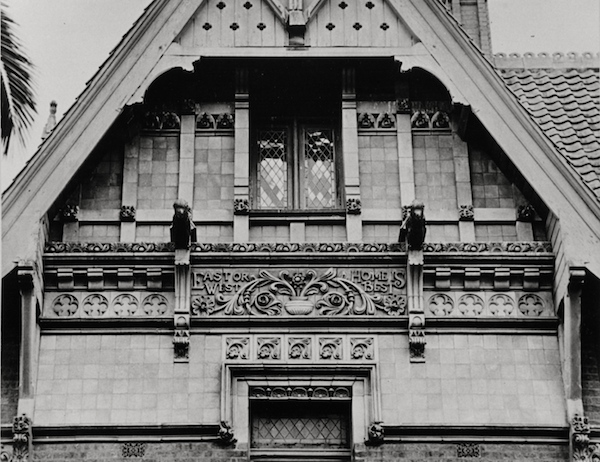
E.G. Kilburn (architect): Facade of Byram. Mark Strizic [photographer]. Kew Historical Society collection
Articles by members of the Society about Art and Architecture include:
Edward George Kilburn (1859-94)
Byram in Studley Park Road, Kew was designed by E. G. Kilburn. This mansion was built for the paper magnate, George Ramsden in 1888. Byram was later to be renamed Goathland, then Tara Hall, Lowan, and finally Tara Hall again. The mansion was demolished and the land subdivided in 1960.
Read more … Edward George Kilburn (PDF, 427 Kb)
Charles Vickers (1820- )
Charles Vickers arrived in the Port Phillip District in 1853. He was already a noted architect in his native Yorkshire. In Australia he continued his specialisation, that of the design of churches. Many buildings designed by Vickers are now included in the Victorian Heritage Register. Descriptions of specific buildings can be viewed in the Victorian Heritage Database. In Kew, two of his notable buildings were Ivy Grange in Princess Street, and the Church of England vicarage in Pakington Street at the rear of Holy Trinity.
Read more … Charles Vickers (PDF 90 Kb)